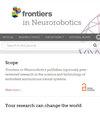Machine learning-based gait adaptation dysfunction identification using CMill-based gait data
IF 2.6
4区 计算机科学
Q3 COMPUTER SCIENCE, ARTIFICIAL INTELLIGENCE
引用次数: 0
Abstract
BackgroundCombining machine learning (ML) with gait analysis is widely applicable for diagnosing abnormal gait patterns.ObjectiveTo analyze gait adaptability characteristics in stroke patients, develop ML models to identify individuals with GAD, and select optimal diagnostic models and key classification features.MethodsThis study was investigated with 30 stroke patients (mean age 42.69 years, 60% male) and 50 healthy adults (mean age 41.34 years, 58% male). Gait adaptability was assessed using a CMill treadmill on gait adaptation tasks: target stepping, slalom walking, obstacle avoidance, and speed adaptation. The preliminary analysis of variables in both groups was conducted using t-tests and Pearson correlation. Features were extracted from demographics, gait kinematics, and gait adaptability datasets. ML models based on Support Vector Machine, Decision Tree, Multi-layer Perceptron, K-Nearest Neighbors, and AdaCost algorithm were trained to classify individuals with and without GAD. Model performance was evaluated using accuracy (ACC), sensitivity (SEN), F1-score and the area under the receiver operating characteristic (ROC) curve (AUC).ResultsThe stroke group showed a significantly decreased gait speed (利用基于 CMill 的步态数据进行基于机器学习的步态适应性功能障碍识别
背景将机器学习(ML)与步态分析相结合可广泛应用于异常步态模式的诊断。目的分析中风患者的步态适应性特征,开发用于识别 GAD 患者的 ML 模型,并选择最佳诊断模型和关键分类特征。使用 CMill 跑步机对步态适应性进行评估:目标步、回旋行走、障碍回避和速度适应。采用 t 检验和皮尔逊相关法对两组的变量进行了初步分析。从人口统计学、步态运动学和步态适应性数据集中提取特征。训练了基于支持向量机、决策树、多层感知器、K-近邻和 AdaCost 算法的 ML 模型,以对患有和未患有 GAD 的个体进行分类。结果与健康组相比,中风组的步速(p = 0.000)和步长(SL)(p = 0.000)显著下降,而步长(SL)(p = 0.000)和步长(ST)(p = 0.000)的不对称性更高。步态适应任务中,回旋行走(p = 0.000)、障碍回避(p = 0.000)和速度适应(p = 0.000)明显下降。步态速度(p = 0.000)和障碍回避(p = 0.000)与脑卒中患者的全局 F-A 评分明显相关。AdaCost 的分类性能更好,ACC 为 0.85,SEN 为 0.80,F1-score 为 0.77,ROC-AUC 为 0.75。结论 脑卒中患者行走速度较慢,SL较短,SL和ST更不对称。他们的步态适应能力下降,尤其是在障碍回避和速度适应方面。更快的步速和更好的避障能力与更好的功能活动能力相关。AdaCost 能识别患有 GAD 的个体,有助于临床决策。这推动了用户友好界面和计算机辅助诊断系统的未来发展。
本文章由计算机程序翻译,如有差异,请以英文原文为准。
求助全文
约1分钟内获得全文
求助全文
来源期刊

Frontiers in Neurorobotics
COMPUTER SCIENCE, ARTIFICIAL INTELLIGENCER-ROBOTICS
CiteScore
5.20
自引率
6.50%
发文量
250
审稿时长
14 weeks
期刊介绍:
Frontiers in Neurorobotics publishes rigorously peer-reviewed research in the science and technology of embodied autonomous neural systems. Specialty Chief Editors Alois C. Knoll and Florian Röhrbein at the Technische Universität München are supported by an outstanding Editorial Board of international experts. This multidisciplinary open-access journal is at the forefront of disseminating and communicating scientific knowledge and impactful discoveries to researchers, academics and the public worldwide.
Neural systems include brain-inspired algorithms (e.g. connectionist networks), computational models of biological neural networks (e.g. artificial spiking neural nets, large-scale simulations of neural microcircuits) and actual biological systems (e.g. in vivo and in vitro neural nets). The focus of the journal is the embodiment of such neural systems in artificial software and hardware devices, machines, robots or any other form of physical actuation. This also includes prosthetic devices, brain machine interfaces, wearable systems, micro-machines, furniture, home appliances, as well as systems for managing micro and macro infrastructures. Frontiers in Neurorobotics also aims to publish radically new tools and methods to study plasticity and development of autonomous self-learning systems that are capable of acquiring knowledge in an open-ended manner. Models complemented with experimental studies revealing self-organizing principles of embodied neural systems are welcome. Our journal also publishes on the micro and macro engineering and mechatronics of robotic devices driven by neural systems, as well as studies on the impact that such systems will have on our daily life.
 求助内容:
求助内容: 应助结果提醒方式:
应助结果提醒方式:


